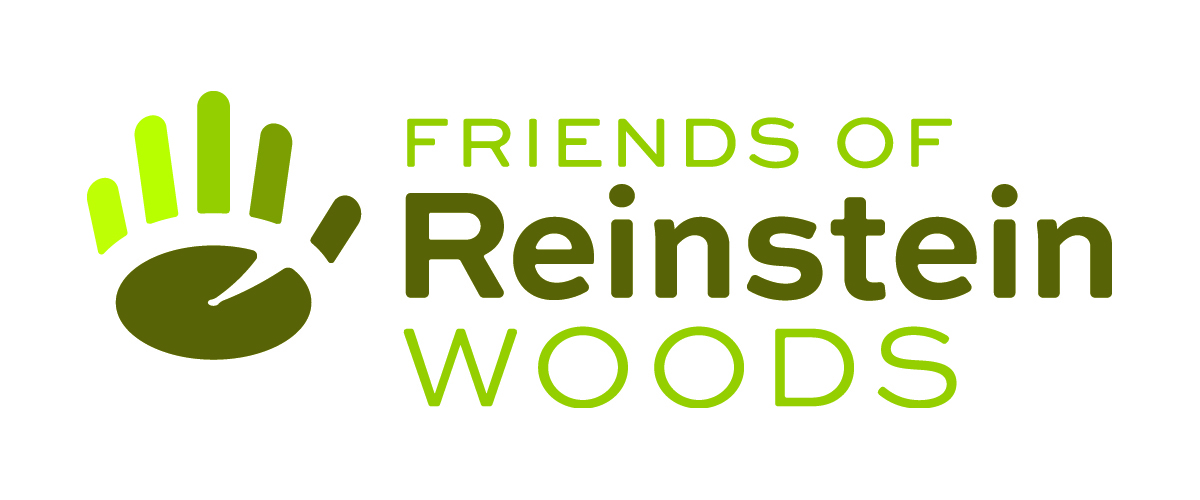Tag Archives: NYS DEC
Habitat News: Beech Trees, New Wildflower, and Reeds!
1) Champion Beech
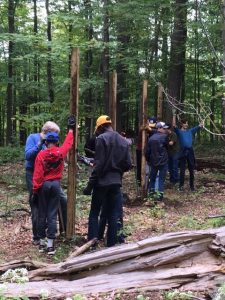
The bad news: this year we have officially declared the Champion Beech Tree dead. The tree, located along Reinstein Woods’ Beech Tree Trail, was the largest forest-grown beech tree in New York State’s Big Tree Registry. It had been in decline from natural causes for several years, and at more than 250 years old, it lived a good lifespan for an American beech tree.
The good news: In September, Boy Scout Oren Forgette of Boy Scout Troop V completed his Eagle Scout project by building a deer exclosure near the champion beech. The exclosure is protecting several young beech and maple trees from being eaten by deer. Some of the young beech trees may be offspring of the Champion beech.
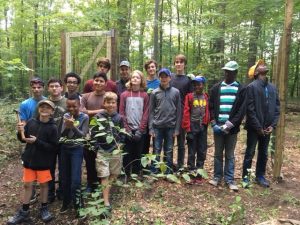
2) New Wildflower Found
In other good news related to deer exclosures, a new wildflower was discovered at Reinstein Woods! Hiding in a deer exclosure in the sanctuary area of the preserve is tall rattlesnake root (Prenanthes altissima), a plant that is native to New York and is also called wild white lettuce. The particular deer exclosure it inhabits was also built several years ago by an Eagle Scout. This plant, photographed this summer while in bloom, becomes the 198th herbaceous plant species identified at Reinstein Woods!
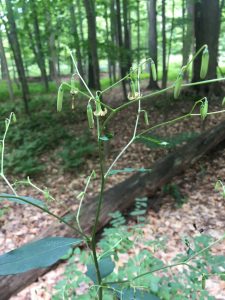
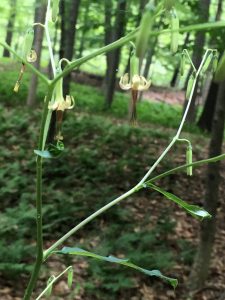
3) Battle Against Invasive Plant Makes Progress
Friends of Reinstein had help this year as it completed its third year of controlling an invasive plant known as common reed, or Phragmites australis, that threatens habitats at Reinstein Woods.
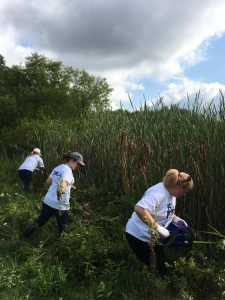
In the spring, a crew from the Excelsior Conservation Corps planted trees and native wildflowers in areas of the sanctuary where common reed has been greatly reduced. During the summer, volunteers with the local Youth Build program and Curbell employees also helped by removing young stalks coming up in sites where the plant used to grow. Native wildflowers, including spotted Joe Pye weed, swamp milkweed, and beggar’s tick are starting to flourish at some of the sites. A donation from employees at Bond, Schoeneck and King helped supply some of the plants.
Next spring Reinstein Woods will be training volunteers to be part of a “Strike Force” that will monitor areas where common reed was removed and try to stop any reinfestation.
Naturalist Intern Program Turns 10 Years Old!
In Fall 2007, DEC started a Naturalist Intern Program at Reinstein Woods, a paid internship program that provides training and experience to college students or recent graduates interested in environmental education. Since then, 63 people, ranging in age from 20 to 40+, have experienced what it’s like to teach and learn at Reinstein Woods.
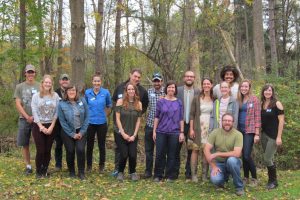
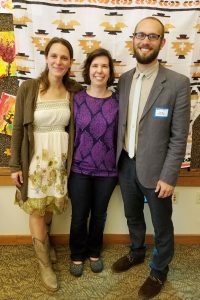
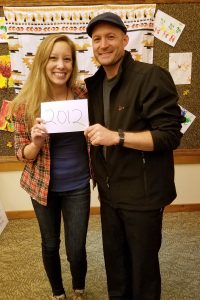
Information about applying to the Naturalist Intern Program can be found on DEC’s website.
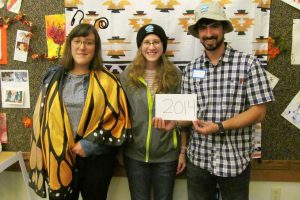 Where Have Reinstein Woods Naturalist Interns Gone?
Where Have Reinstein Woods Naturalist Interns Gone?
Adirondack Mountain Club; AmeriCorps/SCA; Buffalo Museum of Science; Buffalo Niagara Waterkeeper; Buffalo Zoo; Earth Spirit Educational Services; Erie County Park Rangers; Five Rivers Environmental Education Center; Friends of Reinstein Woods; General Motors; Girl Scouts; Heritage Education Program; Hubbard Brook Experimental Forest (NH); Mendacino Woodlands (CA); The Nature Conservancy (PA); NYS Department of Environmental Conservation; NYS Office of Parks, Recreation and Historic Preservation (Evangola State Park & Taconic Outdoor Education Center); Parks & People Foundation (MD); Pigeon Key Marine Science Center (FL); Pinellas County Park Rangers (FL); Pittsburgh Supercomputing Center (PA); Praxair (TX); Rochester Museum & Science Center; Rogers Environmental Education Center; Tetra Tech; Tifft Nature Preserve; Town of Amherst; US Fish & Wildlife Service; Virginia Department of Emergency Management; Wisconsin Dept. of Natural Resources; Western New York PRISM.
Green Your Office for the Holidays with a Dish Library!
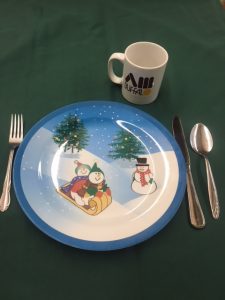 As the holidays approach, here’s a great idea to make your office parties more sustainable: establish a Dish Library! Ask office mates to donate reusable plates, bowls, cups, forks, knives, and spoons that can be stored in a central office location (a file cabinet or kitchenette cupboard works well). The dishes can be borrowed for meetings, birthdays, lunches etc. that otherwise might involve buying disposable products. You can have a formal sign-out system, or opt to let people use them as needed.
As the holidays approach, here’s a great idea to make your office parties more sustainable: establish a Dish Library! Ask office mates to donate reusable plates, bowls, cups, forks, knives, and spoons that can be stored in a central office location (a file cabinet or kitchenette cupboard works well). The dishes can be borrowed for meetings, birthdays, lunches etc. that otherwise might involve buying disposable products. You can have a formal sign-out system, or opt to let people use them as needed.
It’s a great way to reduce waste and save money! So put that old “I Love My Dog” mug sitting in your cupboard to use, get rid of the giant “I Love Vegas” stein that your buddy gave you after his last trip, and add your grown daughter’s My Little Pony dish set to the library!
Thanks to the DEC Sustainability Committee for this idea. For more ideas to make your holidays sustainable, visit DEC’s Sustainable Holidays webpage.
Students Experience “Day in the Life”
By Jill Zerkowski, Naturalist Intern
On September 29, more than 300 students, teachers and volunteers arrived on the shores of the Buffalo River and its tributaries. Equipped with tools such as nets, tubes, clipboards and data sheets, students from six schools from across western New York were ready to explore the complex relationships that are found in the Buffalo River. The fourth annual Day in the Life of the Buffalo River found students ankle deep in water, giving them a unique hands-on experience.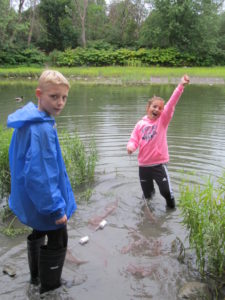
In addition to the students, teachers and volunteers, several partner organizations were on-site to help with the event. Representatives from the Erie County Park Rangers, Buffalo Niagara Riverkeeper, NYS Department of Environmental Conservation’s Great Lakes Program, and US Fish & Wildlife Service’s Lower Great Lakes Fish & Wildlife Conservation Office worked with students at ten different sites to collect data about water quality, biodiversity, create maps, as well as to share the history of the Buffalo River.
All of the data collected by the students will be posted on the web and shared between the participating classes.
Reinstein Woods gave students and educators a day they most likely won’t forget. 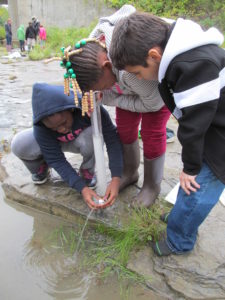 Learning to do real science, like measuring turbidity (the cloudiness in the water), is one benefit of the program. “The turbidity tube was awesome! We poured the water in (the tube), and the secchi disk actually disappeared! It was so cool when we let the water out and could see the disk again,” said one student.
Learning to do real science, like measuring turbidity (the cloudiness in the water), is one benefit of the program. “The turbidity tube was awesome! We poured the water in (the tube), and the secchi disk actually disappeared! It was so cool when we let the water out and could see the disk again,” said one student.
Brittany Rowan, Friends of Reinstein Woods environmental educator, said, “This event is a great opportunity for students to investigate this local water resource and take real-world data. It’s exciting for them to become scientists for a day.”
Special thanks to the local offices of Ingram Micro and Northrop Grumman for providing 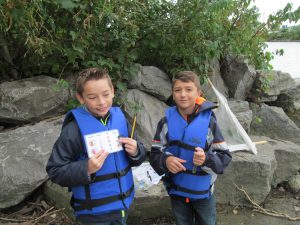 funding to support this STEM (Science, Technology, Engineering and Math) program. The Julia B. Reinstein Trust also provides financial support that makes this program possible.
funding to support this STEM (Science, Technology, Engineering and Math) program. The Julia B. Reinstein Trust also provides financial support that makes this program possible.
Junior League Grant Provides Summer Experience
“This week was the highlight of my summer.”
So proclaimed one of the campers who attended Camp Rushford, an environmental education summer camp in Allegany County. The camper was one of more than a dozen kids who attended camp through NYS Department of Environmental Conservation’s campership program, offered in partnership with Friends of Reinstein Woods. The program recruits kids from urban, underserved areas and enables them to go to camp for free. Friends of Reinstein Woods also pays to sponsor a child to attend camp through the Peter Losi Memorial Campership.
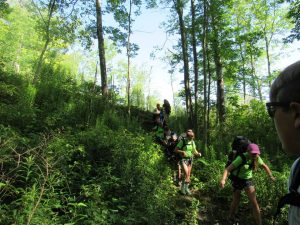
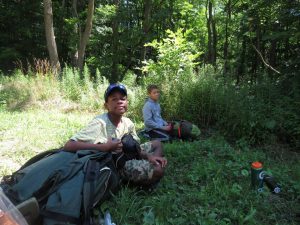 The children spent a week immersed in hands-on learning and fun, discovering the wonders of field, forest, and pond, as well as studying the impact of humans on the environment. A grant from the Junior League of Buffalo provided bus transportation for the children attending camp this summer.
The children spent a week immersed in hands-on learning and fun, discovering the wonders of field, forest, and pond, as well as studying the impact of humans on the environment. A grant from the Junior League of Buffalo provided bus transportation for the children attending camp this summer.
The students had a life-affirming experience, as expressed here:
“This week was the best week of the summer… My favorite part of camp was to make new friends and to play games that I never played before.”
“I had a great time meeting new friends, bonding with counselors, and seeing things I have never sought to see. I would for sure love to come back and have another great time!”
Four of the campers in this program received “Outstanding Camper of the Week” awards. Some of them will have the opportunity to return to camp next year, furthering their development as the next generation of environmental stewards.
